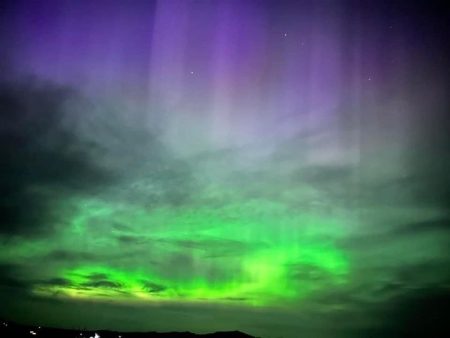Last week, the University of Alaska Fairbanks Geophysical Institute predicted that aurora borealis could be visible July 13 as far south as a Cheyenne, Wyoming, but that appears to not be the case anymore.
Tuesday morning, the university revised their release stating the northern lights will run in an arc further north. The predicted trajectory pathway is from just south of Seattle, Washington, to south of Great Falls, Montana, to north of Billings, Montana, to south of Minneapolis, Minnesota, where it will begin to arc north of Lake Erie, New York and southern Maine.
People in the Big Horn Basin will have a higher chance of seeing aurora borealis along the horizon line with Billings, Montana being apart of the predicted path, but it may not be a prevalent as earlier predicted for those as far south as Cheyenne, Wyoming.
Wyoming is a great place to stargaze because the state produces low levels of light pollutions. Thursday night, the skies should be clear during the viewing times of 10 p.m. to 2 a.m., making it optimal to view the cosmic light phenomenon.

Taken in April 2023 in Northwest Wyoming (Photo Credit: Lauren Taylor)
Coordinator for the University of Wyoming’s Harry C. Vaughan Planetarium, Max Gilbraith reported that the northern nights will be relatively quiet, according to Cowboy State Daily.
“On the 13th there’s a 1-in-3 chance of getting a slight aurora and a 1-in-10 chance of getting a strong one,” Gilbraith said.
Gilbraith said the vibrant colors in northern lights happen when high-energy particles interact with the earth’s magnetic field.
“When those particles collide with our atmosphere while traveling along a magnetic field from the North Pole to the South Pole they collect electricity and dissipate energy into our atmosphere causing it to glow,” he said. “The colors represent different elements in our atmosphere.”
Predicting aurora borealis activity can be difficult ahead of time because the earth and sun have to be in alignment perfectly to experience the space weather phenomenon.
For best viewing, find a low northern horizon line with low light pollution.










